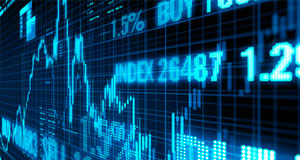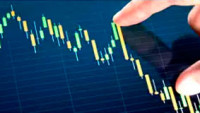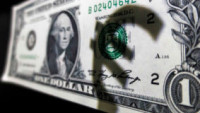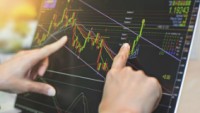 European markets underwent a mixed session yesterday, with the FTSE100 outperforming due to some decent gains in areas of the travel and leisure sector, and other sectors with a strong domestic focus.
European markets underwent a mixed session yesterday, with the FTSE100 outperforming due to some decent gains in areas of the travel and leisure sector, and other sectors with a strong domestic focus.
US markets also finished the session mixed, after a day of wild swings, with both the Russell 2000 and Nasdaq getting hit the hardest and falling back for the sixth day in succession, though they did manage to close well off their lows. Asia markets have tumbled this morning with the Nikkei falling back below the 30k level and a one week low, while the Hang Seng tumbled on reports that the government was looking to raise the level of stamp duty on the trading of stocks.
The testimony of Fed chair Jay Powell to the Senate Banking Committee was pretty uneventful, with no sign yet that he was overly concerned about the recent sharp rise in long term US yields.
His comments that the inflation outlook remained soft and the economic outlook was still highly uncertain, appeared to soothe market concerns about a premature tightening of policy by the Federal Reserve, thus helping pull US stocks off their lows of the day.
While it would have been a surprise if he’d said anything else, it’s almost risible that central bankers have any better idea of what the economy is likely to do in the next 12 months than the rest of us, given their recent track records. Later in the day we also get to hear from Fed vice chair Richard Clarida, and permanent Fed governor Lael Brainard.
We get to go through the same rigmarole later today with the House Financial Services committee, where the tone of the questions is likely to be fairly similar.
If you feel in the mood for further central bank Q&A, we also have the Bank of England’s senior policymakers, including governor Andrew Bailey speaking to the UK Treasury Select Committee this afternoon where we’ll probably get some more juicy titbits about how the central bank still has negative rates in its toolbox, but isn’t currently in a position to use them.
On a more serious note, we may get some indications of how MPC officials see the UK economy in the coming months against the backdrop of a much more optimistic tone, and whether Chief economist Andy Haldane stands by his conviction that there is potentially £150bn of pent-up demand that is set to be unleashed in the coming months, when he speaks at a seminar on the “Changing World of Work”.
The pound has continued its advance to multiyear highs against the US dollar, as markets take the not unreasonable view, barring some serious missteps from the government, that the UK economy will probably be one of the first major economies to start to ease restrictions in the coming weeks.
The whole debate over negative rates, which has taken up so much time over the past couple of years seems somewhat moot right now, with some market participants now hedging themselves against the prospect that the Bank of England’s next move may well be a rate rise. Who saw that coming?
As we look ahead to today’s session, European markets look set for a softer open on the back of this morning’s weakness in Asia markets.
The German economy went into recession at the beginning of 2020, contracting 2% in Q1 and then by 9.7% in Q2. The subsequent rebound in Q3 of 8.5% helped reverse some of the lockdown damage, however it won’t have prevented the German economy from shrinking by around 4% throughout the whole of the year.
The latest adjusted Q4 GDP number is expected to confirm that the economy just about avoided a possible double-dip with a 0.1% expansion, however that is likely to be cold comfort, given that the current quarter is likely to see another contraction.
The German economy saw restrictions start to be reimposed in October last year, and while the German government has imposed a host of support measures which has meant that the impact on the services part of the economy has been muted it’s still going to be a negative start to 2021, due to the delays in the European vaccine rollout plan.
This weak start does appear to be acknowledged by German finance minister Olaf Scholz who suggested that the German government might have to weigh up an extra €50bn of debt spending this year, due to the slow progress on vaccinations, which could well delay any economic reopening.
EURUSD – continues to struggle below the 50-day MA and the 1.2170 level. Only a break higher targets the highs this year at 1.2350. While below here the bias remains for a move back towards the 1.2070 level. This remains a key support, with a move below 1.2060 reopening the risk of a move towards 1.1980.
GBPUSD – continues to edge its way upwards, overcoming the 1.4100 level yesterday and on course for the next target now at the 2018 peaks at 1.4380. We can’t rule out the prospect of a dip back to the 1.3820 area, and last week’s lows, but while above the bias remains for a move higher.
EURGBP – continues to fall back, dropping below the 0.8600 area, which was the next key support. This morning’s sustained break below 0.8580 now opens up the potential for a test of the 2020 lows at 0.8280. Resistance now comes in at the 0.8770 area.
USDJPY – found support yesterday at the trend line from the January lows currently at the 104.60/70 area. Below that targets the 103.80 area. We currently have resistance back near the 200-day MA at 105.50.
________________
Other Forex Forecasts













